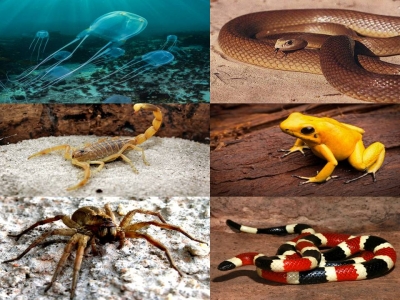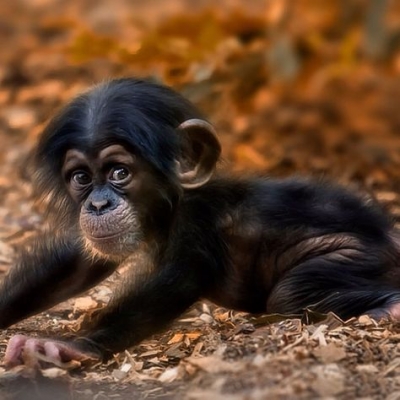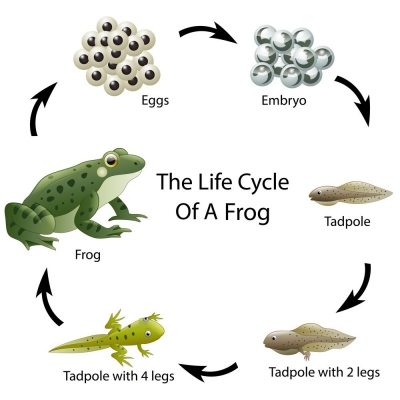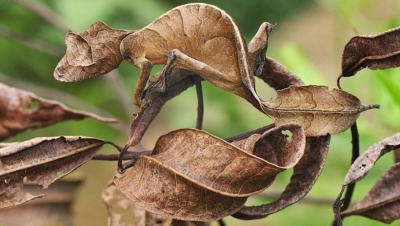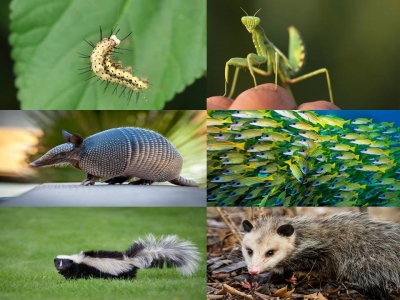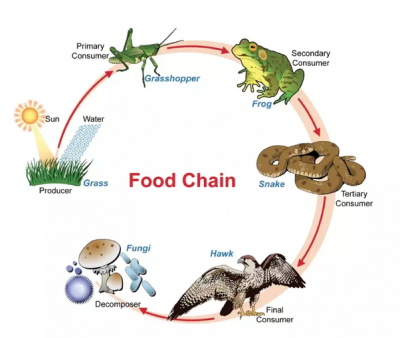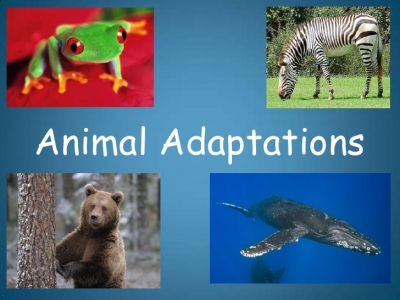
If an animal is well-suited to its habitat we say it has an adaptation. The better-adapted it is, the more likely it is to survive. For example, a penguin’s thick feathers are a perfect adaptation for keeping it warm in the snow, but would make it far too in a desert.
In the desert
Sandy deserts are hot places without much water. Some animals, like camels, have become well-matched for this environment. They can survive without water for days, have a store of fat in their hump for energy, and long eyelashes to keep out the sand.
Fennec Foxes
Fennec foxes inhabit the Saharan desert in Africa, where temperatures average around 104 degrees Fahrenheit. Like many desert creatures, they have developed nocturnal habits, so they are most active after the scorching desert sun goes down. While out and about at night, fennec foxes feast on smaller desert animals, such as beetles and lizards.
Dung Beetles
There are several species of dung beetles, but most of them live in the deserts of Australia and Africa. In the hot, dry desert, moisture of any kind is hard to find. Dung contains moisture from the gut of the animal that expelled it. Instead of searching for rare watering holes the way wildebeest and antelope do, dung beetles wait for these larger animals to do the work of finding water for them.
Bactrian Camels
Camels are some of the most famous desert animals. While some species have only one hump, Bactrian camels have two. These humps serve the same function as those of single-humped camels: They store energy-rich fat, which sustains the camels during long treks across the desert. Many people used to believe that camel humps contained water, which isn't true. It's easy to understand why someone might believe this since camels can go up to seven months without drinking water. In contrast, a human can only survive for three to five days without water in temperate conditions.
Mexican Coyotes
Mexican coyotes are one of several coyote subspecies. As their name implies, they live in the deserts of Mexico, as well as in California and Arizona, mostly in the Sonoran Desert. Although coyotes are sometimes confused with wolves, these desert canines are much smaller, usually weighing only about 30 pounds at full adulthood.
Like fennec foxes, coyotes use their large ears to cool their bodies. However, their most useful desert adaptation may well be their diet.
Sidewinder Snakes
Sidewinders are one of many snake species native to deserts of the southwestern U.S. and northwestern Mexico. These legless reptiles get their name from their unique way of moving. This movement allows them to move quickly and with good traction even over loose, shifting desert sand. Like all snakes, sidewinders are predators. They prey on smaller desert creatures including rodents and small reptiles.
Thorny Devil Lizard
The thorny devil, also known as the thorny dragon, is a lizard specially equipped for life in the deserts of Australia. They are named for the protruding, thornlike growths that cover their skin. These sharp growths are effective at keeping predators such as birds and larger lizards away. Amazingly, their thorns also help them collect water. Like plant stalks, the thorns become covered with dew each morning. The thorny devil drinks this dew, which keeps it from having to hunt for water in the desert.
The thorny devil has a unique way of hunting, which conserves energy. Instead of going after prey to hunt, thorny devils position themselves by ant hills, bury them partially in the sand, and wait for prey to come to them. As ants wander by, thorny devils snatch them up one by one
Under the sea
Many types of animal are adapted to living in the salty sea. The blacktip reef shark has a streamlined body t help it glide through the water and, like all sharks, it has gills that allow it to breather underwater.
Blacktip Reef shark
The Blacktip Reef shark is named for the characteristic black tips on its dorsal and caudal fins. It has a short, round snout and angled, saw-like teeth. Its white belly and dark back allow it to camouflage with the dim seafloor and the brighter ocean surface.
Blacktip Reef sharks swim in shallow waters just a few meters deep near reefs and drop-off zones. They have also occasionally been sighted in freshwater.
Blacktip Reef sharks primarily feed on reef fish but sometimes eat crustaceans, cephalopods and mollusks. These sharks can grow up to 6 feet long. Blacktip Reef sharks are commonly found along the coastlines of Pacific regions, such as Thailand, Japan, Philippines, New Caledonia and northern Australia. They are also found in the Indian Ocean from South Africa to the Red Sea. These sharks are not currently endangered, but the species is experiencing population loss due to overfishing. Blacktip Reef sharks are often caught by commercial fisheries for their meat, liver oil and fins.
Green treefrog
Green Tree Frogs possess its green colour to make it easier to camouflage in bushes and leaves from their predators. The suction-pads on the toes provide stability on the rocks and also in the water. Its large mouth and sticky tongue aid with catching insects so whilst they are flying around it's a lot easier to stick its tongue out and eat them. The large, powerful legs at the back allow the green tree frog to jump a further distance which would be a lot quicker for this amphibian.
These Green Tree Frogs adapt to their environment easily by having the colour of their skin. All of those features that these frogs have really help them to adapt to the environment they all live in currently. Without those features who knows what would happen.
In the snow
It’s a challenge to stay warm in snowy places. The Arctic fox has a thick coat of hair to keep it cosy. Its fur is grey in the summer, but in winter its fur is white to blend in with the snow. This helps it to sneak up on prey.
Arctic Fox
Arctic foxes form monogamous pairs through a breeding season (April to May) though often several females will live together in a large and complex den that can be many years old, even centuries. Typically they have litters of 5 to 8 but may be as many as 25, the most of any carnivore. Sometimes young non-breeding foxes will live in the den also and help to raise the pups from the following year.
A wide range of foods, the main prey is lemmings, they will hunt and catch other small animals and will also scavenge food from beneath sea-bird colonies on cliffs and leftovers from predators such as polar bears. They will take eggs where possible from tundra nesting birds, though are not entirely carnivorous also eating berries and seaweed when available.
A family of foxes can get through several dozen lemmings in a day. They will eat young ringed seals when they are vulnerable in the snow den shortly after they are born in the same manner that they attack lemmings beneath the snow, detecting them by sound and then jumping on and punching through the covering snow layer.
he Arctic Fox lives its whole life above the northern tree line in the Arctic tundra, it has found its way to most Arctic islands and is the only mammal native to Iceland. It may be found on the sea-ice in winter as it extends its foraging range. The southern limit of the arctic fox is partially dictated by the presence of red foxes which out-compete arctic foxes in areas where tundra turns to shrubs and trees.
Picture Credit : Google
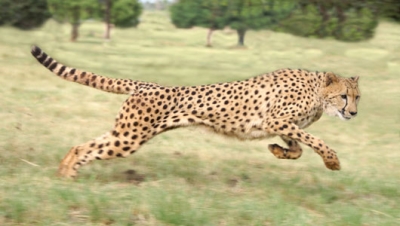 The cheetah can reach a speed of 115 kph (70 mph) in just 3 seconds. The fastest a human has ever run is 45 kph (28 mph). The cheetah's excellent eyesight helps it find prey during the day. The cheetah is hard to see because its spotted coat blends with the tall, dry grass of the plains. Suddenly, the cheetah makes a lightning dash. It knocks its prey to the ground and then bites its throat. Once found throughout Asia and Africa, cheetahs today are racing toward extinction. Loss of habitat and declining numbers of their prey combine to threaten the future of these cats. Cheetahs live and hunt mainly in open grasslands and bushy areas in parts of Africa and the Middle East.
The cheetah can reach a speed of 115 kph (70 mph) in just 3 seconds. The fastest a human has ever run is 45 kph (28 mph). The cheetah's excellent eyesight helps it find prey during the day. The cheetah is hard to see because its spotted coat blends with the tall, dry grass of the plains. Suddenly, the cheetah makes a lightning dash. It knocks its prey to the ground and then bites its throat. Once found throughout Asia and Africa, cheetahs today are racing toward extinction. Loss of habitat and declining numbers of their prey combine to threaten the future of these cats. Cheetahs live and hunt mainly in open grasslands and bushy areas in parts of Africa and the Middle East.